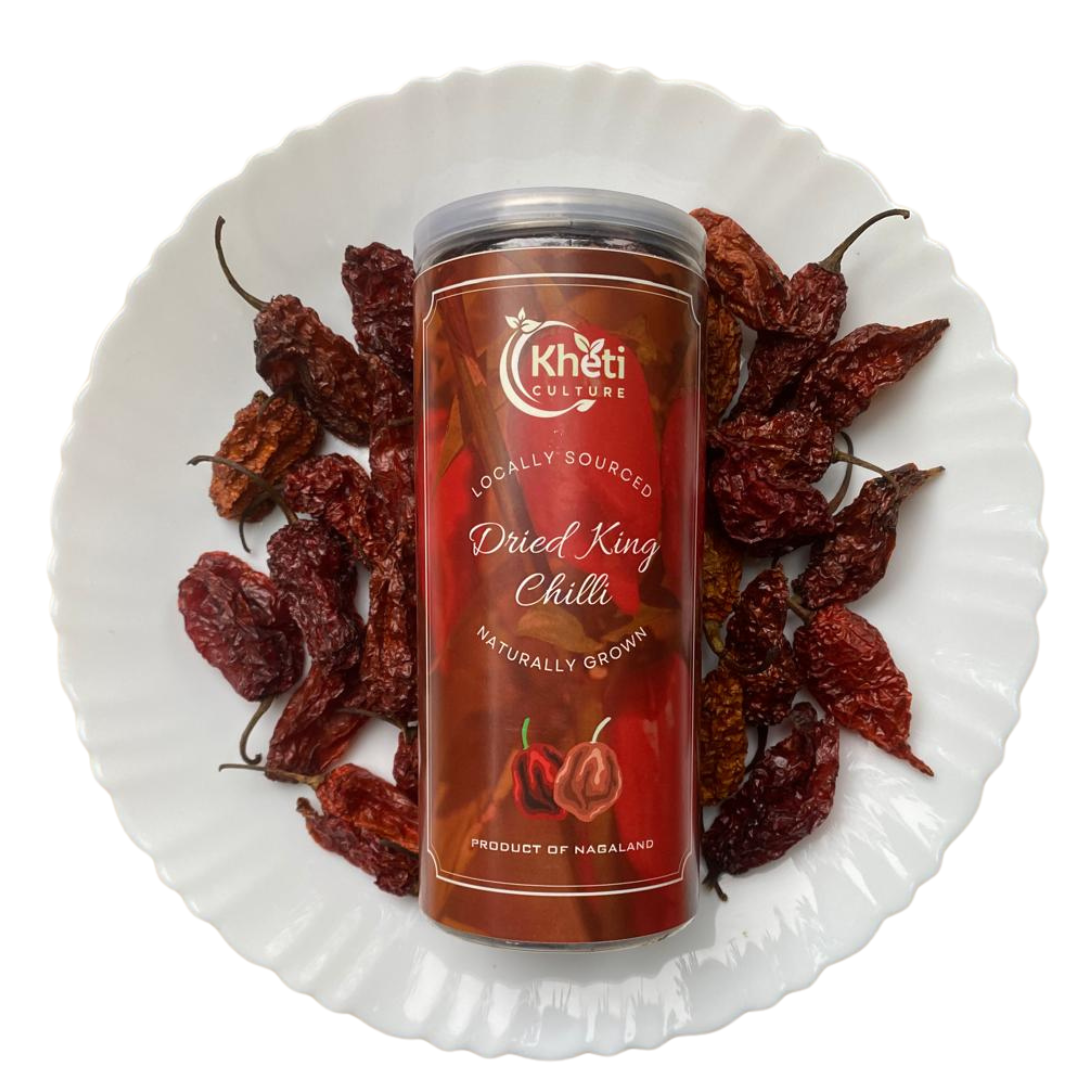
Kheti Culture - Dried King Chilli 50gm
Pickup currently not available
Description
Experience the flery heat of Nagaland's King Chilli, one of the world's hottest chillies. These smoked ghost chillies, grown in the fertile regions of Peren, are known for their intense heat and rich flavor. As a Gi-Tagged product of Nagaland, our dried king chilli offers an authentic taste of the region.
SELLER: Kheti culture
BRAND: Kheti Culture
CONTENT: Dried King Chilli pods.
WEIGHT: 50gm
FSSAI: 21921023000347
ITEM: Dried King Chilli
ORIGIN: Nagaland
DELIVERY: PAN India Shipping
Recent advances in naga king chilli (capsicum chinense JACQ.) research
The Naga King Chilli (Capsicum chinense Jacq) is one of the hotest chillies in the world. This chilli is native to the north eastern region of India and subsequently the geographical indication (GI) of goods tag for this chilli has been obtained by the Nagaland State Government. The chilli was recorded to be the hotest chilli in the world in 2006 with a Scoville heat unit (SHU) rating of 1,001,304. Currently it occupies the fifth position among the hotest chillies in the world. Due to its high potential commercial value, many studies has been carried out in this crop including scientific cultivation, in vitro regeneration, diversity and evolution studies and its diseases and their management etc. This review is an atempt to bring into account the various research work carried out so far in the crop including the traditional and ethno-medicinal uses.
Cultivation Process
The Naga King Chilli is widely cultivated in north-eastern states of India predominantly in Nagaland, Assam and Manipur. Two planting seasons are practised viz. kharif and rabi. Kharif cultivation starts during February - March mainly in the hilly states whereas rabi crop is grown in the plains of Assam during September-October (Baruah et al. 2014). In Nagaland, the farmers practise Jhum cultivation in paddy fields as a sporadic intercrop with summer paddy and also in small homestead garden. The crop is semi perennial but the fruits’ size is gradually reduced beyond three years of growth. In homestead traditional gardens, the farmers prefer to grow the crop in the shade rather than in sunny places as it yields fruits with enhanced pungency. In Jhum cultivation, direct seeding is practiced in paddy fields during February-March and the peak harvest time is between August-September read full article...
(source: researchgate)
care
Food & Beverages : Store in a cool, dry area, and refrigerate if label instructs after opening. Check best-before or use-by dates and reseal tightly to maintain freshness.
Design
Food and Beverages : Food and beverage development involves recipe creation, ingredient sourcing, preparation, processing, packaging, and quality testing.
When will I get my order?
We will work quickly to ship your order as soon as possible. Once your order has shipped, you will receive an email with further information. Delivery times vary depending on your location.



